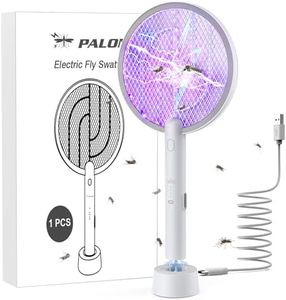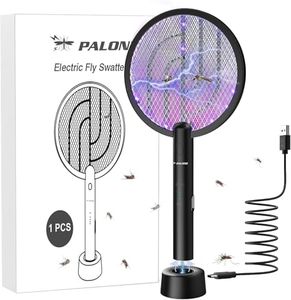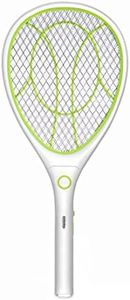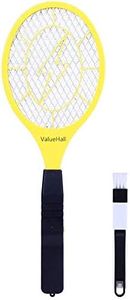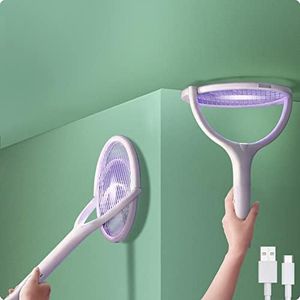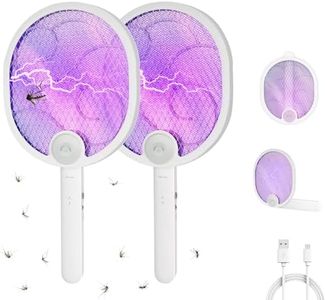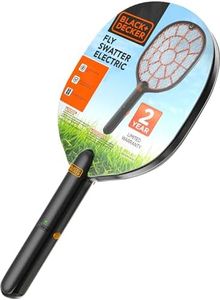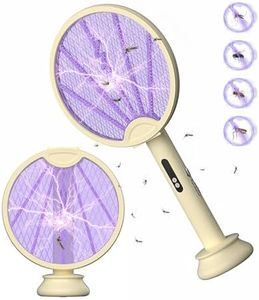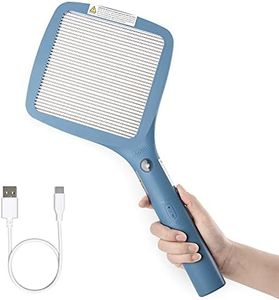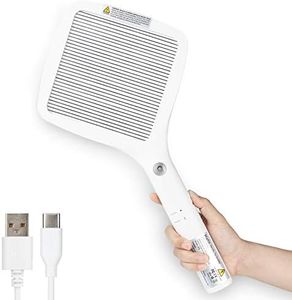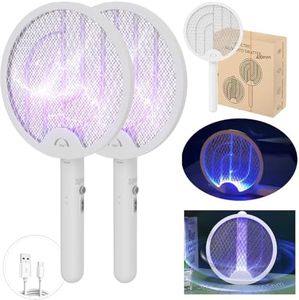We Use CookiesWe use cookies to enhance the security, performance,
functionality and for analytical and promotional activities. By continuing to browse this site you
are agreeing to our privacy policy
10 Best Electric Fly Swatters
From leading brands and best sellers available on the web.Buying Guide for the Best Electric Fly Swatters
Choosing the right electric fly swatter can help you quickly and effectively manage flying insects in your home or outdoor area. The main goal is to find one that’s easy to use, safe, and powerful enough to get the job done without being overcomplicated. Before buying, consider where you’ll use it most – indoors, outdoors, or both – and think about who will be using it (adults, elderly, or children under supervision). Prioritize comfort, effectiveness, and safety to ensure a good match for your needs.Electric Grid VoltageElectric grid voltage refers to the strength of the electric charge used to kill insects on contact. Higher voltage usually means a more effective and quicker kill, but may also result in louder zaps or more noticeable shocks. For most households, a moderate voltage is enough to handle common flies and mosquitoes, whereas higher voltages may be necessary for larger or tougher bugs. If you need quick action in an outdoor area with many large insects, higher voltage can be helpful, but if you mostly use it indoors, a moderate voltage is usually safer and adequate.
Power SourceElectric fly swatters are generally powered either by replaceable batteries (like AA or AAA) or have a built-in rechargeable battery. Replaceable batteries can be convenient if you don’t want to wait for recharging, but they may require purchasing new batteries regularly. Rechargeable models save on battery costs and are more convenient for frequent use, as long as you remember to charge them. Choose based on how often you plan to use it and whether you’ll have easy access to charging points.
Safety FeaturesSafety features include things like protective outer meshes or double-layer grids that prevent accidental shocks if you touch the paddle, especially important if you have children or pets at home. Some swatters also have safety switches to prevent the grid from being powered unless you press a button. If safety is a top concern in your home, look for models with well-guarded grids and safety lock functions.
Size and WeightThe size and weight affect how easy the swatter is to handle, especially during extended use. Lighter and smaller swatters are easier for children or elderly people to use but may have a smaller grid (catching area), which means you have to aim more accurately. Larger and heavier swatters cover more area and may be more effective for outdoor use, but can cause fatigue if used for long periods. Choose a size and weight that feels comfortable in your hand and fits where you intend to use it.
Ease of CleaningAfter zapping insects, the grid can get dirty or clogged, so it’s important to choose a design that’s easy to clean. Simpler designs are easier to wipe with a cloth or brush, while those with more layers or nooks can be trickier. If you plan to use your swatter often, or dislike dealing with insect remains, pick a model described as easy to clean or with accessible grids.
Activation MethodActivation method refers to how you turn on the electric charge. Some swatters require you to hold down a button, which is safer since the grid is only active when needed. Others have switches that leave the grid powered until you turn it off, which might be less safe but more convenient for continuous use. Consider who will use the swatter, and pick an activation method that ensures safety and comfort for your situation.

